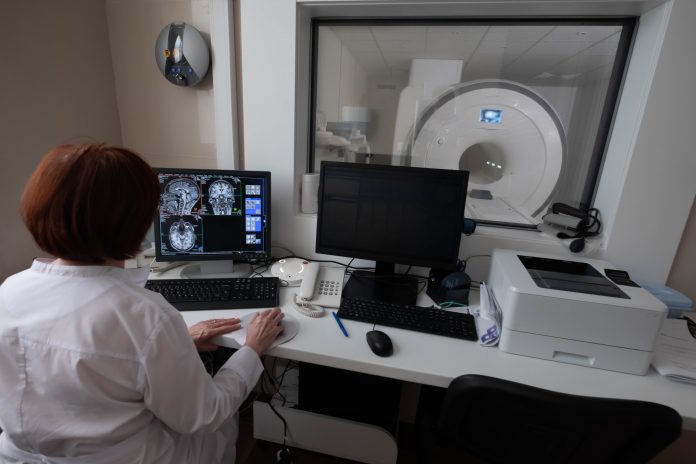Professor Mogens Hørder, PPI expert, JPND’s management board member and representative of member state Denmark, discusses how Patient and Public Involvement (PPI) is at the heart of neurodegenerative disease research
In the last 20 years, Patient and Public Involvement (PPI) has become an indispensable component of health and healthcare research. PPI aims to turn the focus of research towards the patient. The EU Joint Programme Neurodegenerative Disease Research (JPND) developed a PPI strategy in 2015 for the implementation of PPI as part of JPND’s annual calls and as a learning process. PPI expert Professor Mogens Hørder, JPND’s management board member and representative of member state Denmark, talks about JPND’s strategic approach to incorporating PPI into Neurodegenerative Disease Research.

What is Patient and Public Involvement in Research (PPI) and why is PPI part of the JPND strategy?
With PPI, the patient becomes a partner in the planning and conduct of research. The patient has experiential knowledge from living with the disease, which complements the academic knowledge of the researcher. This partnership potentially widens the goal of the research to include the precise needs of patients. The patient may contribute to the various stages of the research project, from its design to its dissemination and finally, the implementation of the project outcomes.
How has PPI been developed by JPND?
JPND is the largest global research initiative aimed at tackling the challenge of neurodegenerative diseases. Originally a European member-state led initiative, JPND is today a global initiative with 30 participating countries. The introduction of PPI in research funded through JPND calls understandably results in a wide variability in researchers’ definition and knowledge of PPI, and an even greater variance in their experience of applying PPI to research. PPI originated in the Anglo Saxon part of the research community in the 1990s.
Since then, its dissemination has taken place. However, when JPND initiated its PPI strategy in 2012, PPI remained very much a distant concept only, to most researchers. Much emphasis has been placed on the engagement of the representatives of the JPND Member States. The implementation of PPI should be seen as a learning process, firstly among the members of the Management Board and subsequently among researchers from the 30 countries.
In 2012, PPI was brought up for consideration by the JPND Management Board and discussed again with JPND’s Scientific Advisory Board. As a result of these discussions, an Action group for PPI was established, leading to recommendations for a strategic approach to PPI. Support for the further development of PPI came from the Dementias & Neurodegenerative Diseases Research Network (DeNDRoN) funded by the Department of Health in England.
DeNDRoN supports the development and delivery of clinical research in the fields of dementia, Parkinson’s disease, Motor Neuron disease, Huntington’s disease and other neurodegenerative diseases in the English health service, NHS. A JPND Advisory Group on PPI gave feedback on the recommendations for the implementation of PPI in JPND research by the Action group.
JPND’s Strategy for PPI and its implementation
By 2014, a strategy for the implementation of PPI in JPND Calls for Research Proposals was confirmed by the JPND Management Board. The implementation of PPI as part of JPND Calls was applied for the first time in the 2015 Call.
PPI is integrated into the Call Process through four steps:
Step one involves the application for funding by the pre-selected consortia. In the full application, researchers must describe how they have planned for PPI in the proposed project, if and how PPI is considered during the development of the idea for research and the conducting of the project.
Step two is a systematic review by a PPI secretariat of how PPI was planned by the consortia. The outcome of the review is a ranking of each application in one of the following three categories: A) satisfactory plan for PPI, B) plan for PPI may be improved, C) unsatisfactory or missing plan for PPI. The outcome of this ranking is considered by the scientific review panel as part of the overall rating of the application.
Step three involves the actual application of PPI by the researchers. Each research consortia with a proposal funded through JPND comprises partners from at least three different countries. The knowledge and experience of PPI differ greatly across the JPND member countries. Collaboration on PPI among the partners of the consortia supports the dissemination of knowledge and learning about PPI.
Step four involves the follow-up by the JPND PPI Secretariat on what took place during step three. This is done after year 1 and year 4 of the research project. From these follow-ups, information about the way PPI has been applied is identified and can serve as shared information on the progress of PPI application over time. The most relevant part of this information will be available on the JPND website as support for future applicants.
What has been achieved and what comes next?
A systematic review of PPI of the proposed projects for funding has shown that between 60 – 80 % of the proposals have a satisfactory plan for PPI. Less than 5% of these proposals have missing or unsatisfactory PPI.
After year one of funding, most projects still adhere to their plans for PPI. With respect to PPI conduct, often, only one representative country instead of every country of the consortium is responsible. As of now, more follow-ups need to be done to accurately assess the impact of PPI on projects (usually over a period of at least 5 years).
Over the next 4 to 5 years, knowledge and experience from the 2016 to 2020 JPND Calls will be made available on JPND’s website, providing a source for shared learning for all researchers taking part in projects funded through JPND.
Benefits of PPI
PPI in research is mutually beneficial to both patients and researchers. PPI provides researchers with insights into how it is to live with a particular condition, which in turn helps ensure the relevancy of research design, conduct and implementation and improve the quality of healthcare research. Simultaneously, involving patients in research brings health benefits to both patients and their families as they feel empowered in having voice-over decisions and actions concerning their own health.
Please note: This is a commercial profile








